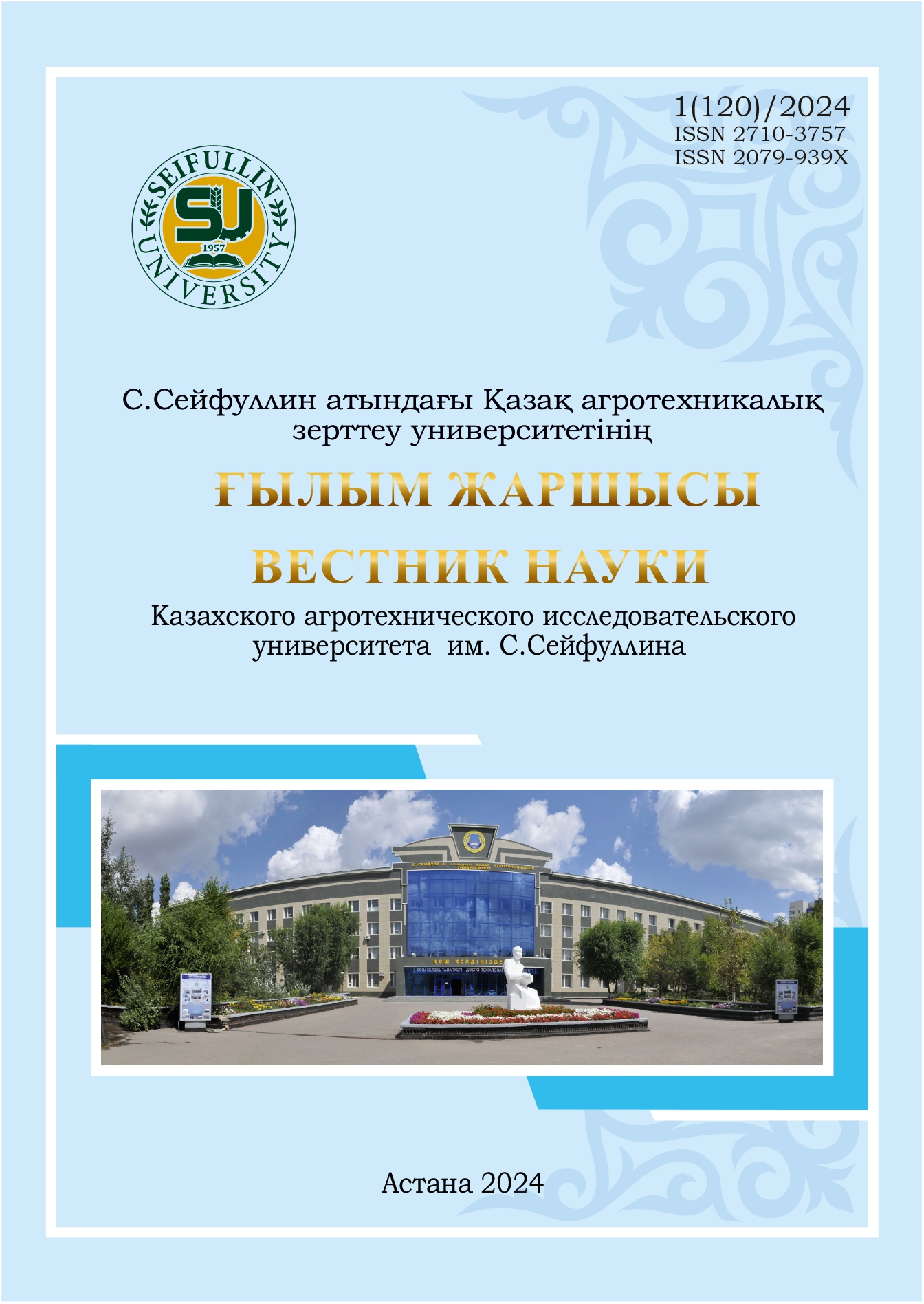FEATURES OF FORMATION OF THE PHOTOSYNTHETIC APPARATUS OF LUPINUS ANGUSTIFOLIUS IN THE CONDITIONS OF THE STEPPE ZONE OF NORTHERN KAZAKHSTAN DEPENDING ON AGRICULTURAL PRACTICES
DOI:
https://doi.org/10.51452/kazatu.2024.1(120).1587Keywords:
angustifolia lupine; assimilation surface; dry biomass; photosynthetic potential; net photosynthetic productivity; growth regulators; sowing dates and sowing rate.Abstract
In recent years, in the Republic of Kazakhstan, as well as throughout the world, agriculture has been aimed at greening and biologizing farming systems. Organic farming plays a huge role in this direction, the potential of which has not been fully realized in the country. According to world experience, in solving this problem, special importance is given to the cultivation of leguminous crops, including lupine, which increases soil fertility and ensures high productivity. But the areas of cultivation of grain legumes in the Republic remain small, which is due to insufficient awareness of cultivation technology and the peculiarities of the development of crops from this agrobiological group. Lupine is a new crop for Kazakhstan and requires a lot of study. The potential capabilities of a culture are realized at the physiological level, including the process of photosynthesis. Therefore, studying the peculiarities of the formation of the photosynthetic apparatus of lupine is relevant. The study was conducted to study the influence of agricultural practices on the photosynthetic activity of forage lupine in the conditions of Northern Kazakhstan. The study established the main patterns of changes in the assimilation surface, the dynamics of dry matter accumulation, photosynthetic potential and net photosynthetic productivity depending on agricultural practices. The optimal sowing time and seeding rates for lupine have been identified, and the feasibility of using growth regulators has been substantiated. The research methodology is based on an analytical review of literature sources, goal setting, and development of a research program. Research methods are field experiments, records and observations, mathematical data processing. Research has shown that treatment with growth regulators Megamix Semena before sowing (1.5 l/t) and during the growing season Megamix Bor (1 l/t) provides maximum performance in the fruit formation phase - in terms of assimilation surface (48.5 cm2), photosynthetic potential (55.25 thousand m2 x day/ha), in the ripening phase - by dry biomass (3.91 g/plant), net photosynthetic productivity (96.1 g/m2 per day). Sowing on May 5th at a rate of 1.0 mln seeds/ha was optimal in arid climate conditions. In these experiments, there is a positive correlation between yield and leaf surface area (r = 0.87 0.91) and dry matter accumulation (r = 0.79-0.96). This work can serve as the basis for further study of the photosynthetic activity of lupine, and can also be useful in choosing sowing dates, seeding rates, and growth regulators for cultivating lupine in arid conditions.

